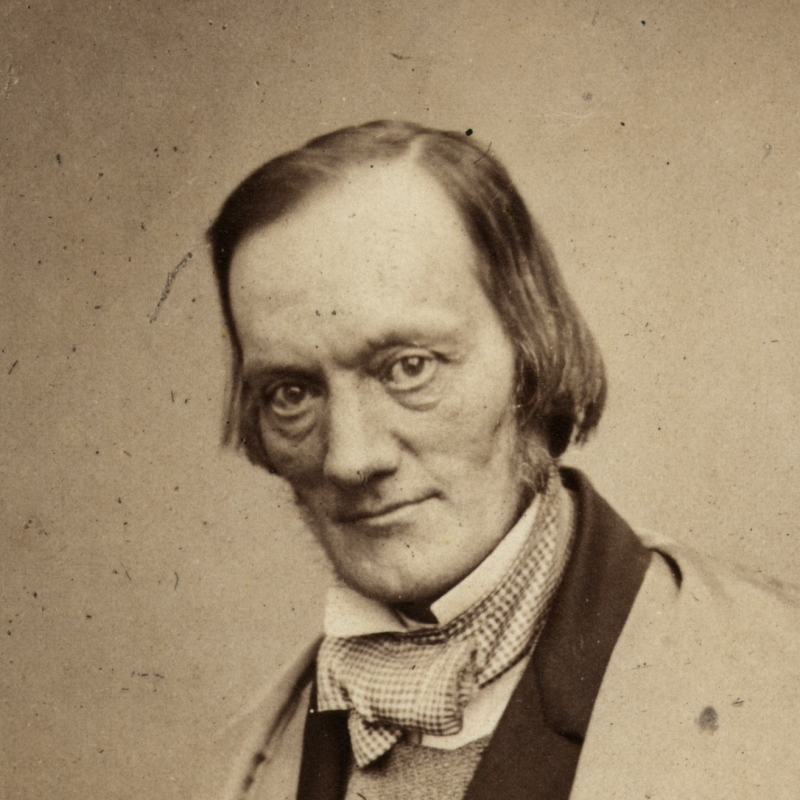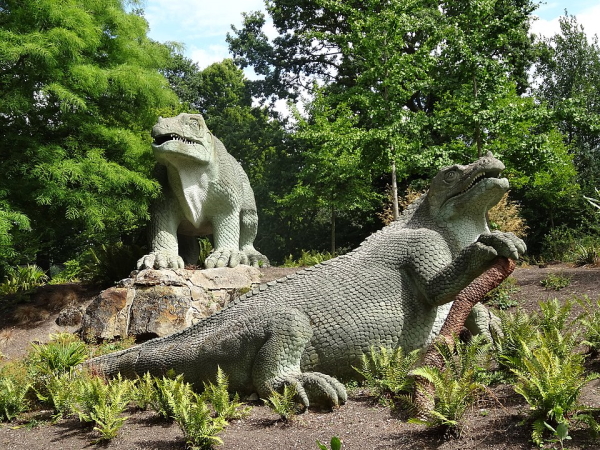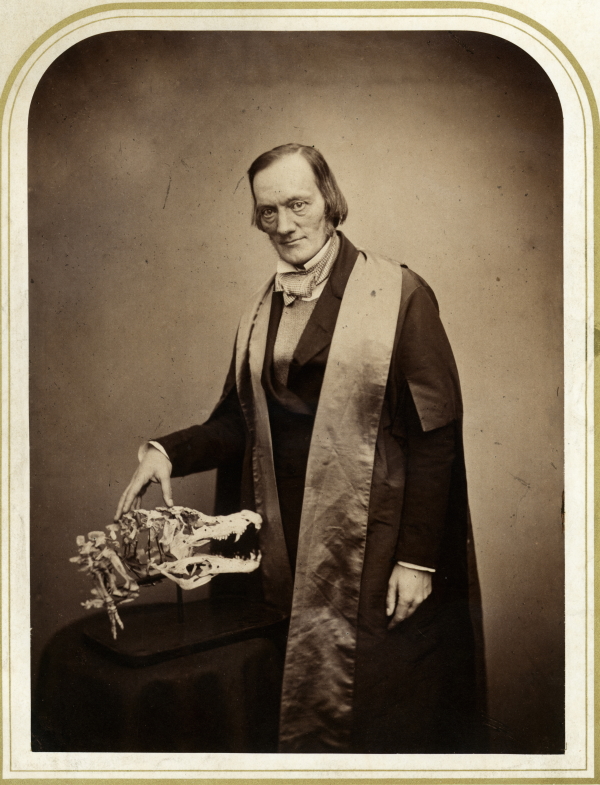Frankie Chappell takes a look at the dinosaur sculptures and evolutionary theories of Royal Society Fellow Richard Owen.

These days, I can barely go anywhere without stumbling across some link to the Royal Society.

Dinosaurs in Crystal Palace Park, by Ian Wright (Wikimedia Commons)
Recently, I went looking for dinosaurs in south London, to satisfy the curiosity of my nephew who has become obsessed with them. Luckily enough, I was in exactly the right place – Crystal Palace Park is full of them. While I’d never claim to be a dinosaur aficionado, I was struck by how some of them looked a little… well, off, like a low-budget version of Jurassic Park. Looking into the history of the dinosaur statues, I found that our very own Richard Owen FRS (1804-1892) was the man responsible for them, and actually coined the term Dinosauria.
Although we have more accurate imaginings of dinosaurs now, the models were based on the most up-to-date scientific knowledge of the time, and were actually the first dinosaur sculptures anywhere in the world when they were revealed in 1854. Owen took the role of scientific director, while the design and sculpting was done by Benjamin Waterhouse Hawkins. I was unfamiliar with Owen’s work, but discovered that he’s often remembered for the dinosaur sculptures: Vanity Fair observed in 1873 that ‘his monsters became the delight and the wonder of an idle people, and having found a permanent place at the Crystal Palace, they to this day remain the best-known works of their designer.’

Richard Owen, ca.1855 (RS.8130)
Owen wasn’t just interested in dinosaurs, it turns out. Aside from palaeontology, he was also an accomplished biologist and anatomist, albeit with a reputation as a difficult man, suspected of claiming more than his fair share of credit for the work of others such as Gideon Mantell FRS. Their fencing over precedence in discoveries occupies a good many entries in Mantell’s diary of the period: ‘Poor envious man!’ was one of Mantell’s long-suffering assessments, following yet another paper dispute played out in London’s various learned societies. Owen’s portrait (above) shows him with a crocodile skull (an interesting choice in itself), which gave me a hunch that he was interested in heads and brains. This was confirmed when I found his article ‘On the structure of the brain in marsupial animals’ (1837) in the Philosophical Transactions of the Royal Society.
Knowing what I do about the focus on head sizes by eugenicist figures such as Francis Galton, Flinders Petrie and others, I figured this might signal some eugenicist tendencies. I actually found an altogether more complicated story, suggesting that Owen, while arguing against evolutionary theories linking humans to apes, also countered theories that placed races in a hierarchy and – within that hierarchy – Black people as closer to animals.
We get a glimpse into Owen’s scientific arguments in a paper from our collection, ‘Description of parts of a human skeleton from Pleistocene (Paleolithic) bed, Tilbury, Essex’ (1883). In describing the characteristics of the skeleton’s skull (shown above), Owen contends that ‘these are, however, strictly Human characters … not developed in Quadrumana [apes]’. Owen generally argued in his work that humans were distinct from apes, and as such that the brain sizes of different races were on the whole the same. The idea that races could be ranked by their cranial capacity and that brain size denoted intelligence was a key tenet of scientific racism.
Owen shouldn’t be reclaimed as some sort of anti-racist hero. Early in his career, for instance, he obtained the head of a deceased Black prisoner so that he could make comparisons between races, and he was clearly no moral crusader against scientific racism. However, when racist figures are frequently dismissed and defended simply as products of their historical era, the importance of Owen (a prominent scientist in his time, particularly prior to Darwin’s rise), together with others such as Friedrich Tiedemann FRS, should be noted as they demonstrate how racist theories faced scientific criticism and opposition even in earlier times.








